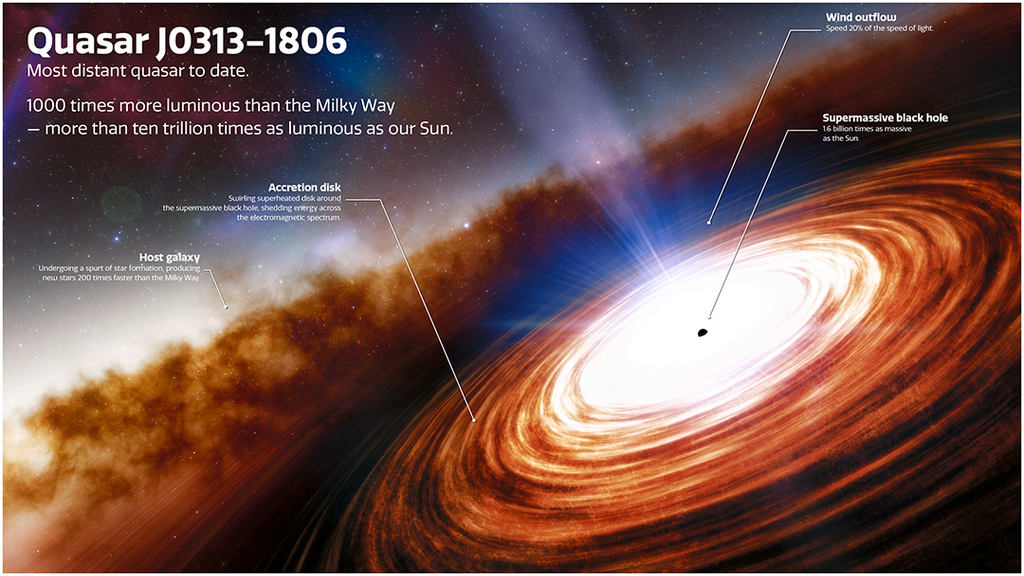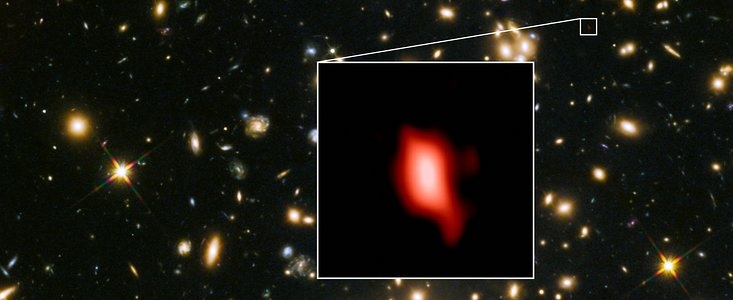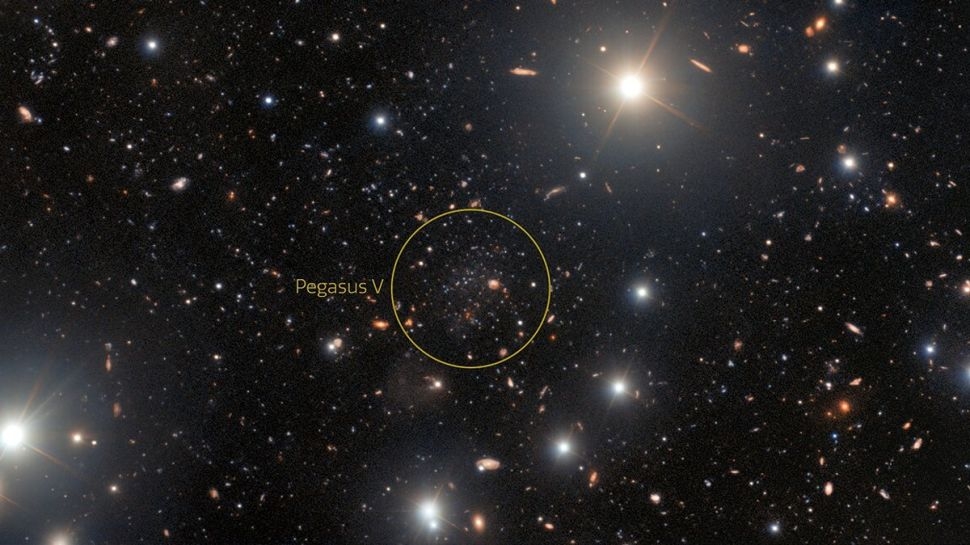The birth of quasars finally decoded
For decades, astronomers had been scratching their heads about this mystery: how could objects with masses of thousands of solar masses at birth form so early in the cosmic timeline?
The first of these “Quasi-Stellar Radio Sources” was discovered in the sixties, and by the eighties it was understood that quasars are galaxies hosting supermassive black holes which accrete gas and releases enormous amounts of energy, making quasars the most luminous objects “out there”. The most mind-bending fact though, is that 200 of them had already formed by the time our Universe was celebrating its first billionth anniversary. Until now, astronomers thought only very fine-tuned and somewhat exotic environments, e.g., with a strong ultraviolet radiation background, could be suitable for the formation of these giants.

A team from the University of Portsmouth developed supercomputer models to demonstrate that actually, quasars form naturally from turbulent clouds of gas. In their scenario, cold streams of gas prevent the cloud from collapsing too early, enabling the formation of stars at unimaginable scales – 30 000 solar masses or so. These supermassive stars will burn through their fuel extremely quickly, about 250 000 years, before collapsing to sizeable black holes. So, primordial halos of gas “conveniently created the massive seeds” of quasars, as the lead author of the study puts it.
C1 and C2 are supermassive stars that will collapse into black holes that are viable seeds for forming quasars
Speaking of really old galaxies, MACS1149-JD1 made the headlines again, too. Despite it being one of the farthest known galaxies, astronomers were able, using ALMA, to measure redshift from position to position inside the galaxy. This was done in order to establish that this is the earliest source yet found that has a rotating disk of gas and stars. It’s a slow rotation (50 km/s compared to 220 km/s for our Milky Way), suggesting that is has only just started rotating – a unique find. In the standard picture of galactic evolution, older stars are found at the centre while star formation continues in the rotating disc. The researchers hope that identifying the precise positions of stars of different ages in MACS1149-JD1 will help establish this theory.

Another fossil from the early Universe was found in our neighbour’s backyard, and by an amateur astronomer! By looking through archival data taken with the Dark Energy Camera on the Blanco Telescope at the Cerro Tololo Inter-American Observatory (CTIO), G. Donatiello noticed a “smudge”. After follow-up observations with the Gemini North telescope, it turns out that this feature is Pegasus V, a very old, metal-deficient faint galaxy around the Andromeda galaxy. While it is a difficult task to spot such faint galaxies, astronomers are very keen to discover them because if the observed numbers are inconsistent with predictions, they might have to review their assumptions about dark matter. On top of that, studying the chemical properties of objects like Pegasus V can provide clues into the time of the formation of the first stars.

The Vera C. Rubin Observatory’s Legacy Survey of Space and Time (LSST) will be essential for astronomers to build up their hypotheses about galaxy formation and evolution, notably in this last quest for faint galaxies – excitingly, the LSST’s first light is scheduled for 2023. But even sooner, there’s of course the JWST: its first full-colour image is due to be delivered by NASA next Tuesday, as the telescope is getting ready to give the most detailed ever infrared observations of galaxies in the early Universe.
Cover Image: Stills from the simulation, Latif et al., 2022
Image Credits:
1 - Structure of quasar, NOIRLab/ NSF/ AURA/ J. da Silva/ Keck Observatory
2 - Video: simulation of the birth of a primordial quasar, University of Portsmouth
3 - Fig. 4 from Latif et al., 2022
4 - MACS1149-JD1, ALMA (ESO/NAOJ/NRAO), NASA/ESA Hubble Space Telescope, W. Zheng (JHU), M. Postman (STScI), the CLASH Team, Hashimoto et al.
5 - Pegasus V, International Gemini Observatory/NOIRLab/NSF/AURA Acknowledgment - Image processing: T.A. Rector/M. Zamani/D. de Martin
